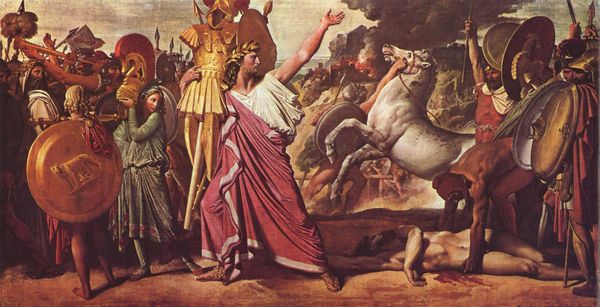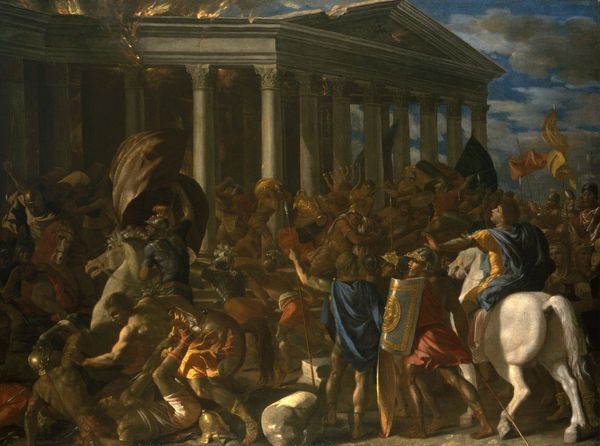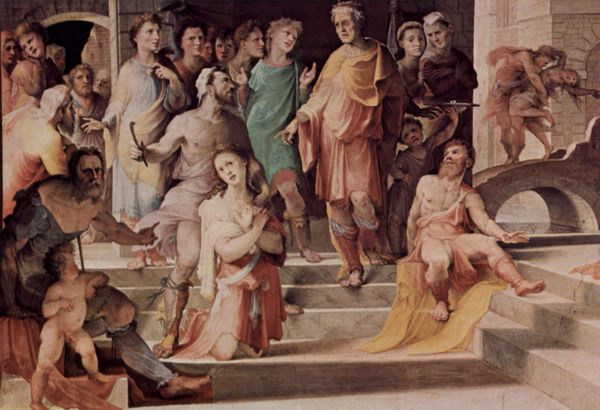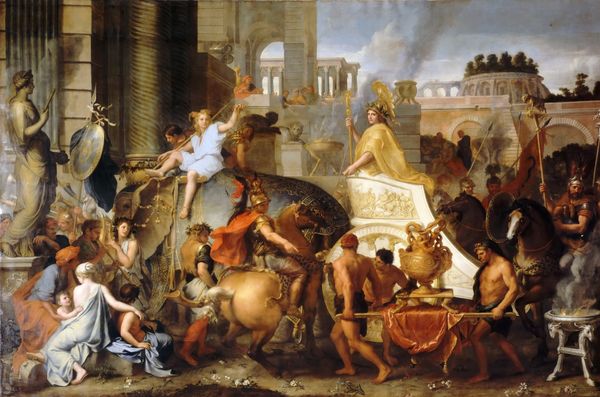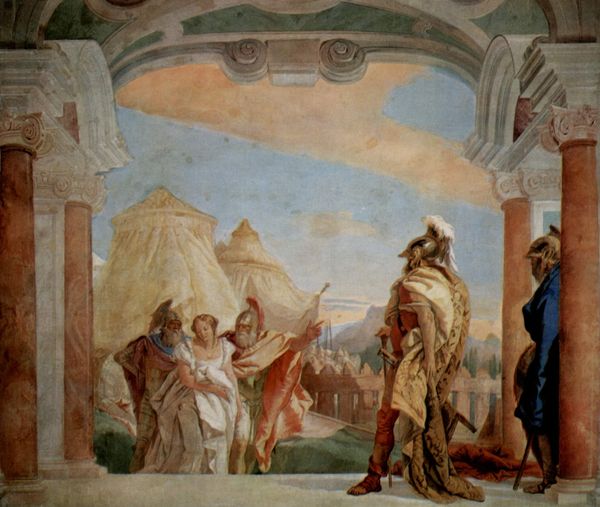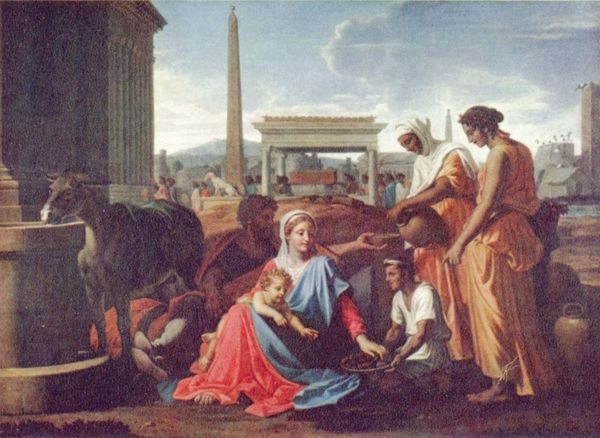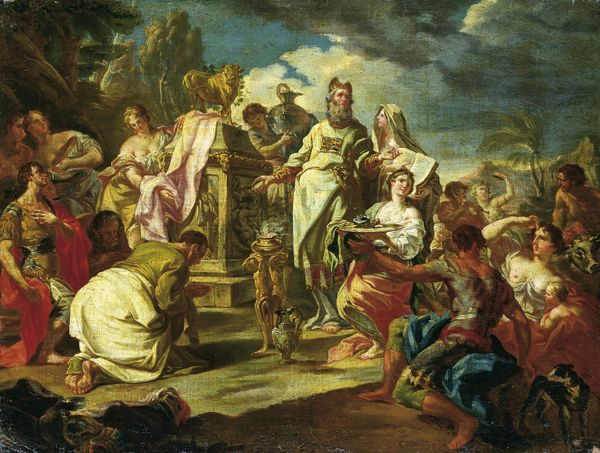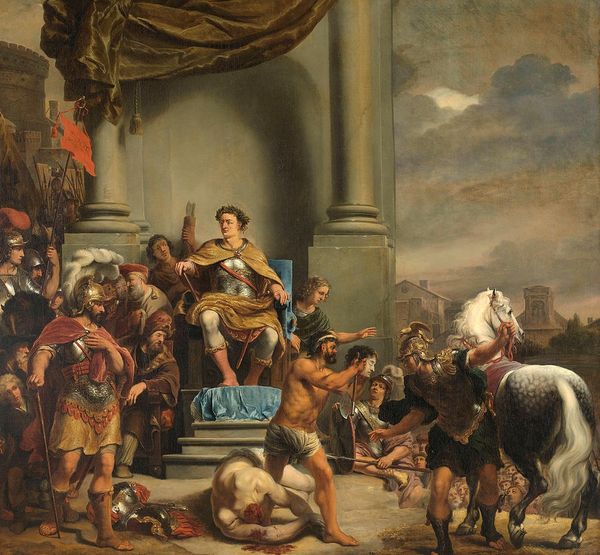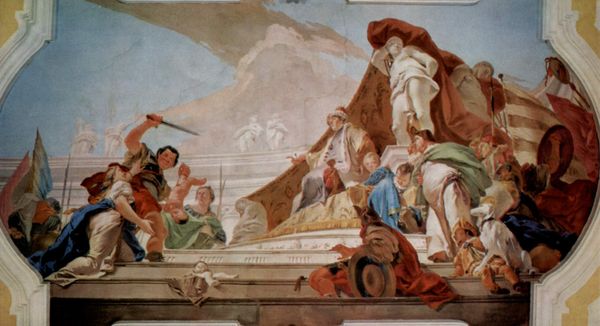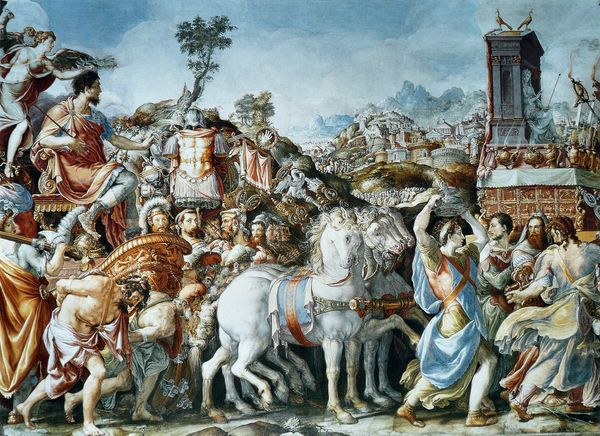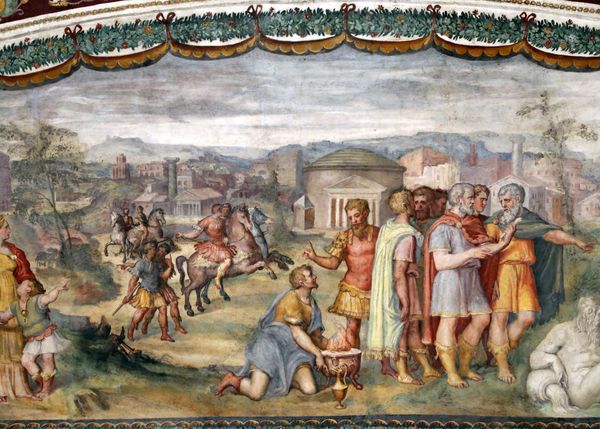
painting, oil-paint
#
allegories
#
neoclacissism
#
allegory
#
painting
#
oil-paint
#
landscape
#
figuration
#
oil painting
#
history-painting
#
academic-art
Dimensions: 90 x 118 cm
Copyright: Public domain
Editor: This oil painting is Pierre-Paul Prud'hon's "Triumph of Bonaparte and Peace (Sketch)," created in 1801. It strikes me as grand and celebratory, almost staged, in its neoclassical presentation. What's your take on its cultural context? Curator: Prud'hon was strategically crafting an image of Napoleon as a bringer of peace, deeply embedded in the political climate after the French Revolution. Consider the strategic use of allegory; Peace, personified as a classical goddess, accompanies Bonaparte. This wasn't just art; it was carefully constructed propaganda solidifying Napoleon’s power through imagery reminiscent of Roman emperors. Does the classical aesthetic reinforce this message for you? Editor: Definitely. The chariot, the laurel wreaths, the togas – they all contribute to that imperial association. But it also seems…idealized, removed from the realities of war and political maneuvering. Curator: Exactly! That's the critical function of state-sponsored art. By idealizing Napoleon and linking him with peace, Prud'hon aims to legitimize his rule. The painting functions as a carefully orchestrated public performance, obscuring the violence inherent in Napoleon's rise to power. What kind of audience do you imagine consuming an image like this? Editor: An elite audience, for sure – people with access to galleries or reproductions, people whose opinions mattered politically. I see the message now. It’s not about truth, but about projecting an image of stability and triumph. Curator: Precisely. Understanding art in its socio-political context allows us to see beyond the surface beauty and appreciate the power dynamics at play. Editor: That’s really changed my perspective. I initially saw a simple, beautiful painting, but now it feels more like a carefully crafted political statement. Curator: And that awareness allows us to engage more critically with art's role in shaping historical narratives.
Comments
No comments
Be the first to comment and join the conversation on the ultimate creative platform.
